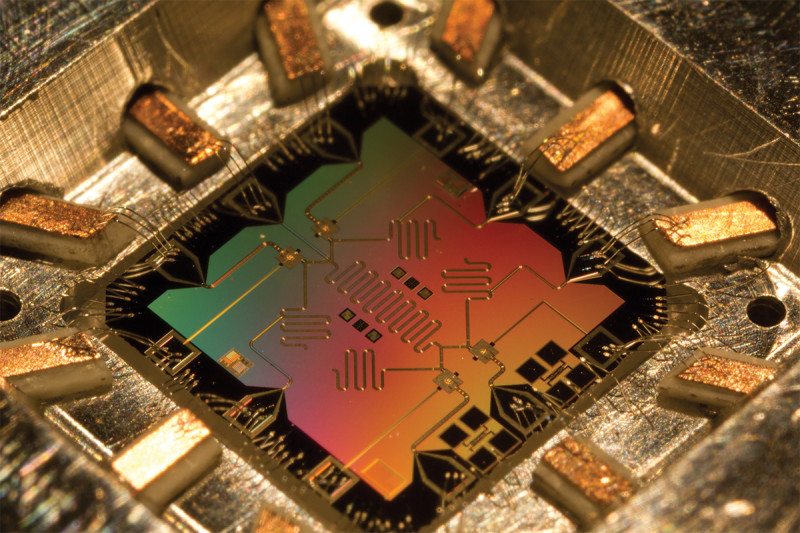Quantum Computing in Physcis
What are Quantum Computers?
Quantum Computers harness the power of atoms and molecules (representing qubits) to perform memory and processing tasks. As a result, it has the potential to perform calculations faster than any silicon-based computer ever will. Normal computers process binary information, meaning that something is either on or off (1 or 0). Quantum computers however give us the ability to go beyond the binary and to undertake new calculations. These are called qubits which can be both on and off at the same time and operate under the principles of superposition and entanglement. Superposition means that each qubit can represent both on and off (1 or 0) at the same time. While entanglement states that a qubit in superposition can depend on one another.
What Lead to the Quantum Computer?

In 2012, Serge Haroche and David J Wineland were awarded the Noble Prize in Physics for inventing and developing methods to measure and manipulate individual particles in their quantum nature.
Serge Haroche: Created a space where microwaves bounced between two supercooled mirrors. Haroche wanted to test whether or not there would still be microwaves, so he sent atoms of rubidium through the space. He found that the rubidium has changed slightly and has become entangled with the microwave. Showing to us the property of entanglement. Meaning that the information of the microwave can be found from the rubidium atoms without disturbing the microwaves.
David Wineland: His worked involved trapping electronically charged atoms (or ions) using lasers. As the ions were held still, they did not have much energy. As a result, when a laser pulse was aimed at the ion, it would capture a small bit of energy. Controlling the amount of energy the ion receives allowed Wineland to manually place ions in a state of superstition.
Physics Behind Quantum Computing:
The physics behind quantum computing relies on two theories. These theories are Superposition and Entanglement.
Superposition: In the terms of quantum computing, superposition states that particles can exist in different states. As a result, these particles can be in different positions, have different energies, or be moving at different speeds. Meaning that these particles are seen as existing across all possible states at the same time (be in two places at once).
Entanglement: Entanglement occurs when a pair of particles interact physically. These entangles particles remain connected so that any action performed on one particle affects the other. In quantum computing, an unobserved particle exists in all possible states at the same time, but when observed it shows only one state.
Microsoft's Take on Quantum Computing:
Sources:

In 2012, Serge Haroche and David J Wineland were awarded the Noble Prize in Physics for inventing and developing methods to measure and manipulate individual particles in their quantum nature.
Serge Haroche: Created a space where microwaves bounced between two supercooled mirrors. Haroche wanted to test whether or not there would still be microwaves, so he sent atoms of rubidium through the space. He found that the rubidium has changed slightly and has become entangled with the microwave. Showing to us the property of entanglement. Meaning that the information of the microwave can be found from the rubidium atoms without disturbing the microwaves.
David Wineland: His worked involved trapping electronically charged atoms (or ions) using lasers. As the ions were held still, they did not have much energy. As a result, when a laser pulse was aimed at the ion, it would capture a small bit of energy. Controlling the amount of energy the ion receives allowed Wineland to manually place ions in a state of superstition.
Physics Behind Quantum Computing:
The physics behind quantum computing relies on two theories. These theories are Superposition and Entanglement.
Superposition: In the terms of quantum computing, superposition states that particles can exist in different states. As a result, these particles can be in different positions, have different energies, or be moving at different speeds. Meaning that these particles are seen as existing across all possible states at the same time (be in two places at once).
Entanglement: Entanglement occurs when a pair of particles interact physically. These entangles particles remain connected so that any action performed on one particle affects the other. In quantum computing, an unobserved particle exists in all possible states at the same time, but when observed it shows only one state.
Microsoft's Take on Quantum Computing:
Sources:
All About Quantum Computing, Physics.org, www.physics.org/article-questions.asp?id=106.
All About Quantum Computing, Physics.org, www.physics.org/article-questions.asp?id=106.
“Particle Control in a Quantum World” Nobelprize.org, www.nobelprize.org/nobel_prizes/physics/laureates/2012/press.html."Particle Control in a Quantum World ." Nobelprize.org. Nobel, Web.



What are the quantum computers used for? A.I.? Are quantum computers at the front of scientific discoveries?
ReplyDelete